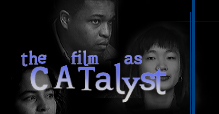Teaching about Racism as more than Personal Prejudice
These films present a variety of students’ perspectives on race and racism. The opportunity to hear these different perspectives is a very important component of anti-racism education. It is important for educators to keep in mind however that most college students today tend to view racism as individual bias and prejudice without an understanding of the broader systemic nature of the problem. Therefore one goal of anti-racism educators should be to help students move from viewing racism as individual bigotry to recognizing its complex nature as a systemic phenomenon that pervades every aspect of United States society. The Talking about Race films are a great way to open the conversation about racism. There is, however, a great deal more to say. Educators who use these films are encouraged to use them in conjunction with additional information, activities, and readings that will help students understand that American racism is “centuries-long, deep lying, institutionalized, and systemic” (Feagin, 2001 p. 16) and therefore cannot be understood in individual terms alone.
The shift from conceptualizing racism as an individual phenomenon to seeing it as systemic can be particularly challenging because the notion of racism as systemic is in direct contrast to many students’ core values and assumptions that America is built on the principles of hard work and merit. White students in particular tend to believe that all Americans are seen and treated as individuals and that any individual who works hard will be rewarded through a fair and just society. Most White Americans do not tend to see slavery, legal segregation, or contemporary racism as pieces of an American system of racism. Instead, racism is seen as a blemish on American history that, with the exception of a few “bad” individuals, has essentially been eradicated. One of the most insidious aspects of contemporary racism is its ability to remain camouflaged in everyday practices, policies, and ideas. Because of this, educators need to be vigilant in helping students unearth the complexity of racism. A list of resources is provided to help educators with this process. We hope you will find it useful.






